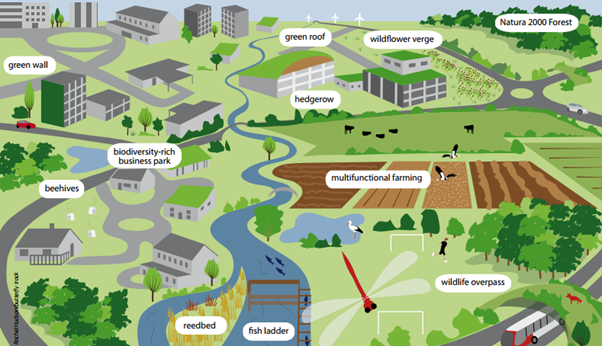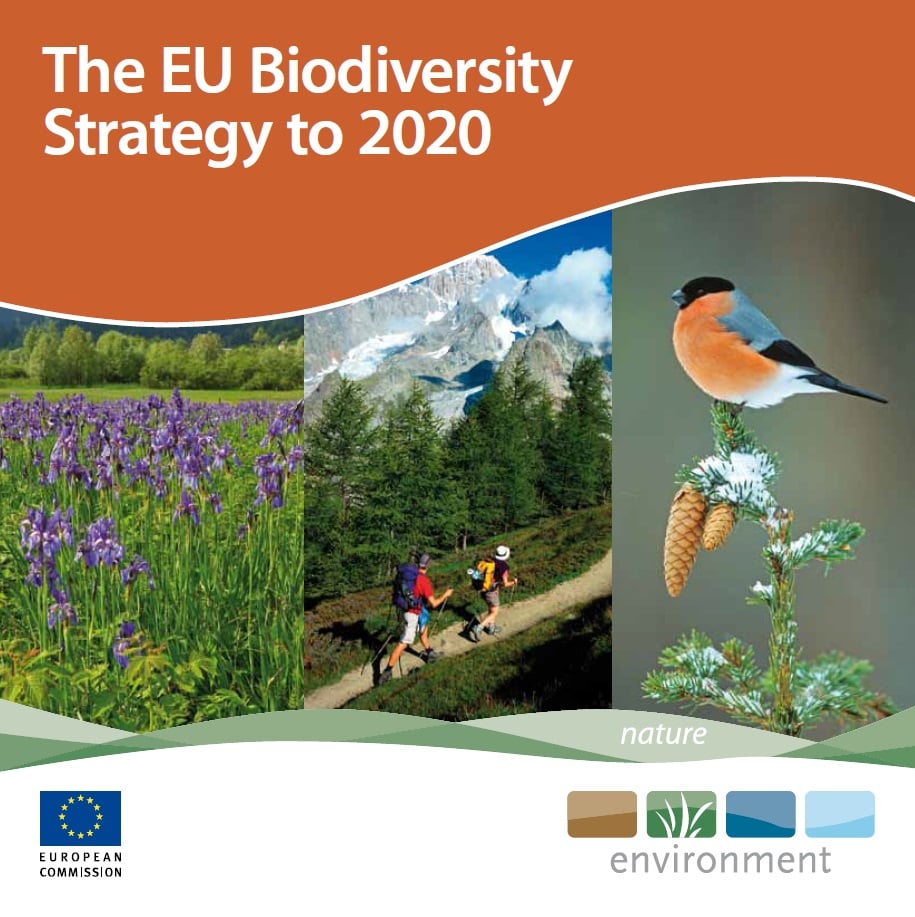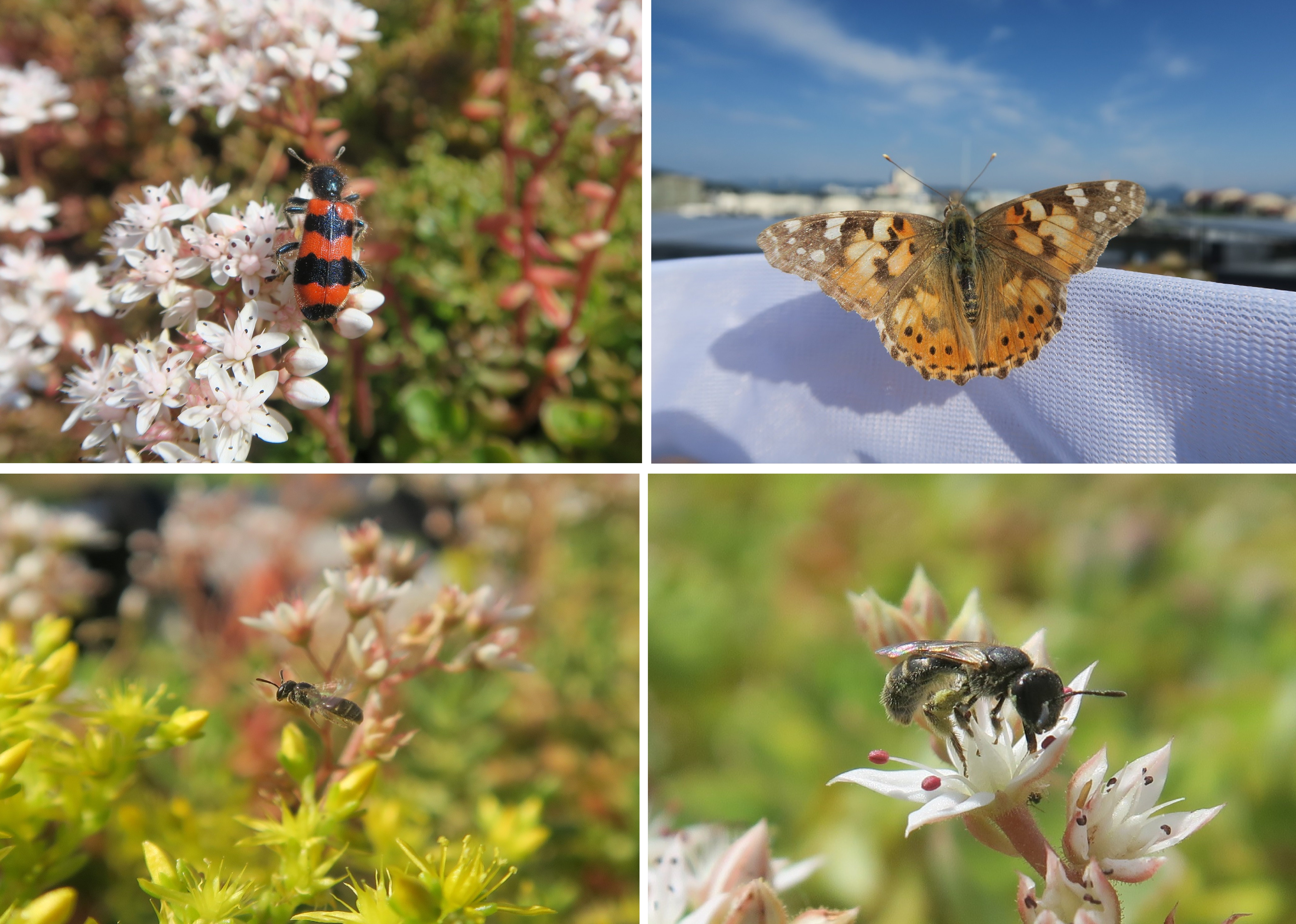In recent years, with ever more apparent climate change and extreme weather phenomena, policy makers have come to recognise the need for change and a clear plan of action to dissuade at least some of the consequences of irresponsible human actions of the past. The values of preserving and taking care of our environment are slowly evolving from an alternative movement to the mainstream consciousness as governments and legislation take a turn towards a greener future.
At the level of weather changes and habitat destruction the activities of humans have caused in the last decades, it takes much more than a number of well-intentioned activists and enthusiasts to repair the damage done. We need a wide-ranging community effort supported by a clear policy to achieve results. This is why the European Commission has developed several strategic documents to guide the “old continent” back on track when it comes to sustainable development. Through this process, green infrastructure has been recognised as a solution that is bound to play an important role.
The definition of green infrastructure in EU documents
The EU Regional Development Fund describes green infrastructure as a strategically planned network of high quality natural and semi-natural areas, designed and managed in order to deliver a wide range of ecosystem services. That includes green spaces in rural and urban areas, as well as aquatic or marine spaces that represent important sources of clean water and wildlife habitat. (1)

Green infrastructure, unlike the traditional “grey” infrastructure, has the ability to deliver a wide range of positive results. That includes environmental benefits - conserving biodiversity or adapting to climate change, as well as social benefits - providing green space and better access to nature for people, and economic benefits - boosting jobs and providing business opportunities. Therefore, a key feature of green infrastructure is its multi-functionality. (1)
Tackling climate change mitigation in EU legislation
The EU has developed a number of policies to combat the negative environmental changes that we are experiencing today. The main document, representing the widest and most abstract range of actions that need to be taken, is the European Union Biodiversity Strategy 2020. The strategy consists of 6 targets; protecting species and habitats, maintaining and restoring ecosystems, achieving more sustainable agriculture and forestry, developing sustainable fishing and making sees healthier, combating the invasion of non-native species and stopping the loss of biodiversity.
 Photo 2: Cover of the "European Union Biodiversity Strategy 2020" document (2).
Photo 2: Cover of the "European Union Biodiversity Strategy 2020" document (2).Green infrastructure contributes to all 6 targets of the EU Biodiversity Strategy 2020 - in particular to the implementation of the Birds and Habitats Directive (target 1) and to maintaining and enhancing biodiversity in the wider countryside and the marine environment (targets 3 and 4). This is why the EU Biodiversity Strategy to 2020 and the Roadmap to a Resource Efficient Europe included commitments to develop a green infrastructure strategy for Europe. The strategy was therefore adopted in 2013 under the title Green Infrastructure – Enhancing Europe’s Natural Capital, is the key EU level policy document in terms of green infrastructure development. (1)
Fighting fragmentation - The importance of connectivity
According to The European Environment Agency, traditional land use activities, such as farming, have become more intensive in the last decades. Reports also show that in a single decade around 5% of EU territory was covered with concrete. Within the same period, Europe’s motorways have increased in length by almost 41% (15,000 km) and are set to increase by a further 12,000 km in the years to come. In densely populated countries like Belgium, the average size of natural habitat units that are not traversed by major transport routes has been reduced to just 20 km2 (EU average is 130 km2). (2)
Despite large areas of the EU being protected by Natura 2000, about 30 % of the EU territory remains fragmented, limiting the size of natural habitats for the residing species. Each year more than 1000 km² of land are developed for housing, industry and recreation. This not only has negative effects on natural habitats and biodiversity, but it also harms human health and wellbeing (3) This is why the EU has recognized the importance of different development strategies that help preserve wildlife and limit the effects of man-made environments on the natural world.
Implementing green infrastructure beyond protected areas will help to strengthen the coherence of the Natura 2000 network by making the core areas more resilient, providing buffers against impacts on the sites, and offering practical real-life examples of how healthy protected ecosystems can be used in a way that provides multiple socio-economic benefits to people as well as to nature. (2) In its 2020 Biodiversity Strategy, particularly through Target 2, the EU considers green infrastructure to play an important role in protecting, conserving and enhancing the EU’s natural capital.(2)

Photo 3: Different types of species founf on Urbanscape Green Roof (3)
Green policies on a local and regional level
Integrating green infrastructure at a local level can be achieved through various nature-based measures on any level – from streets to rooftops. It can be introduced into the transport sector to help minimize the fragmentation of natural habitats and reduce noise levels. Green infrastructure can also replace non-permeable surfaces in urban areas to help prevent flooding, preserve water quality and reduce the detrimental effects of urban heat. The benefits go beyond biodiversity as such solutions have positive impacts on regional economies, public health, and resilience of transport systems. (1)
Summary
In general, green infrastructure policies aim to enhance nature’s ability to deliver multiple ecosystem goods and services, such as clean air or water, which will in turn foster a better quality of life and human well-being. This improves biodiversity by reconnecting isolated nature areas and increasing the mobility of wildlife across the wider landscape. It also has the potential to mitigate the effects of climate change, for instance by alleviating floods, storing carbon or preventing soil erosion. (2) With this approach, the EU is encouraging a smarter, more integrated green development strategy that ensures a respectful approach to our limited resources and promotes an efficient and eco-friendly Europe.
|
Green roofs go beyond the meaning of contemporary architecture and give a new value to the role of buildings within urban planning. They are designed not only to bring back the natural element in the urban environment but also to provide solutions for important issues such as urban heat island effect and stormwater management. Read the ‘Urban Smart Gren - green cities, green homes, happy people’ magazine. |
Urbanscape® Green Infrastructure products
Urbanscape® products offer the potential for a wide variety of different uses. We provide green infrastructure solutions for buildings, landscaping, transit and even moving vehicles!
Learn more about our products on our Urbanscape solutions webpage.
Blog written by: Ana Belčič, Studio Miao
Sources:
- (1): Development of green infrastructure in EU regions – Interreg Europe: The EU Regional Development Fund, 2017
- (2): Building a green infrastructure for Europe – European Commission, 2013
- (3) Conserving ecosystems, providing landscape connectivity; Transboundary Protected Areas’ efforts in Green Infrastructure – EUROPARC Federation
Photos sources:
- (1): European Commission, 2013. Building a Green Infrastructure for Europe.
- (2): European Union, 2011. https://europa.eu › file › download
- (3): Knauf Insulation, 2019



